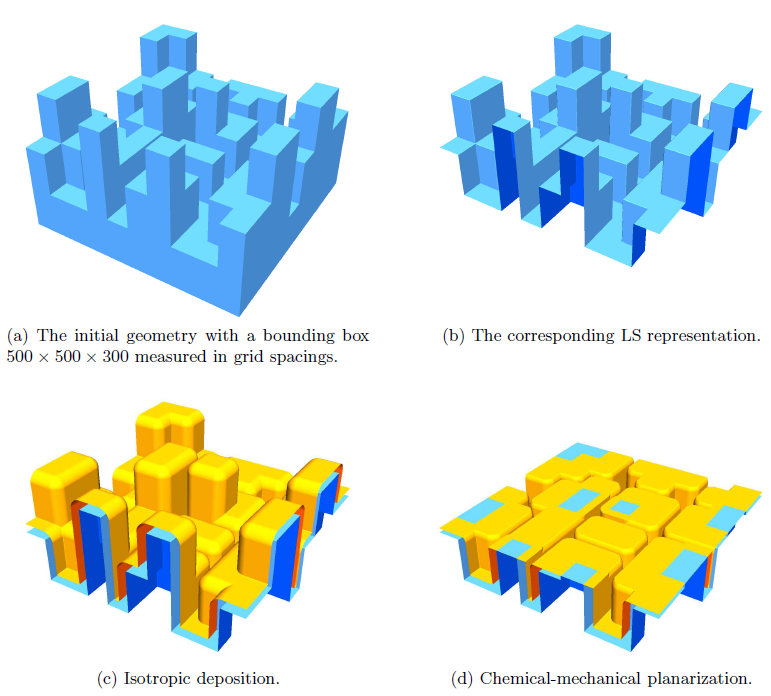



Next: 4.4.3 Pattern Transfer
Up: 4.4 Boolean Operations
Previous: 4.4.1 Implementation
If a geometry is represented as LS, Boolean operations can easily be calculated. They can be applied to simulate various semiconductor processes in a simplified manner. For example, the simplest model for chemical-mechanical planarization (CMP) assumes that everything is cut away above a certain height. Hence, the new structure
 is obtained by
is obtained by
 |
(4.14) |
where  is the normal vector and
is the normal vector and  the distance to the origin of the cutting plane
the distance to the origin of the cutting plane
 . By setting up a LS function
. By setting up a LS function
 , whose zero LS represents
, whose zero LS represents
 (4.14) can be written as
(4.14) can be written as
 |
(4.15) |
Here  and
and  are the LS functions describing
are the LS functions describing
 and
and
 , respectively.
, respectively.
Figure 4.5 shows an example, for which CMP is used to flatten the geometry after an isotropic deposition process. Boolean operations are applied to both, the LS function representing the initial structure and the LS function representing the final structure after the deposition process.
Figure 4.5:
After an isotropic deposition process the structure is exposed to CMP. This process is realized using Boolean operations applied on the LS representations of the initial surface (blue) and the surface after the deposition (yellow).
|
|




Next: 4.4.3 Pattern Transfer
Up: 4.4 Boolean Operations
Previous: 4.4.1 Implementation
Otmar Ertl: Numerical Methods for Topography Simulation
![]() is obtained by
is obtained by
